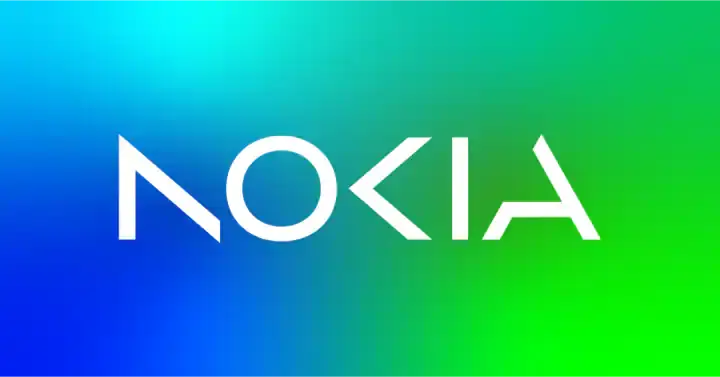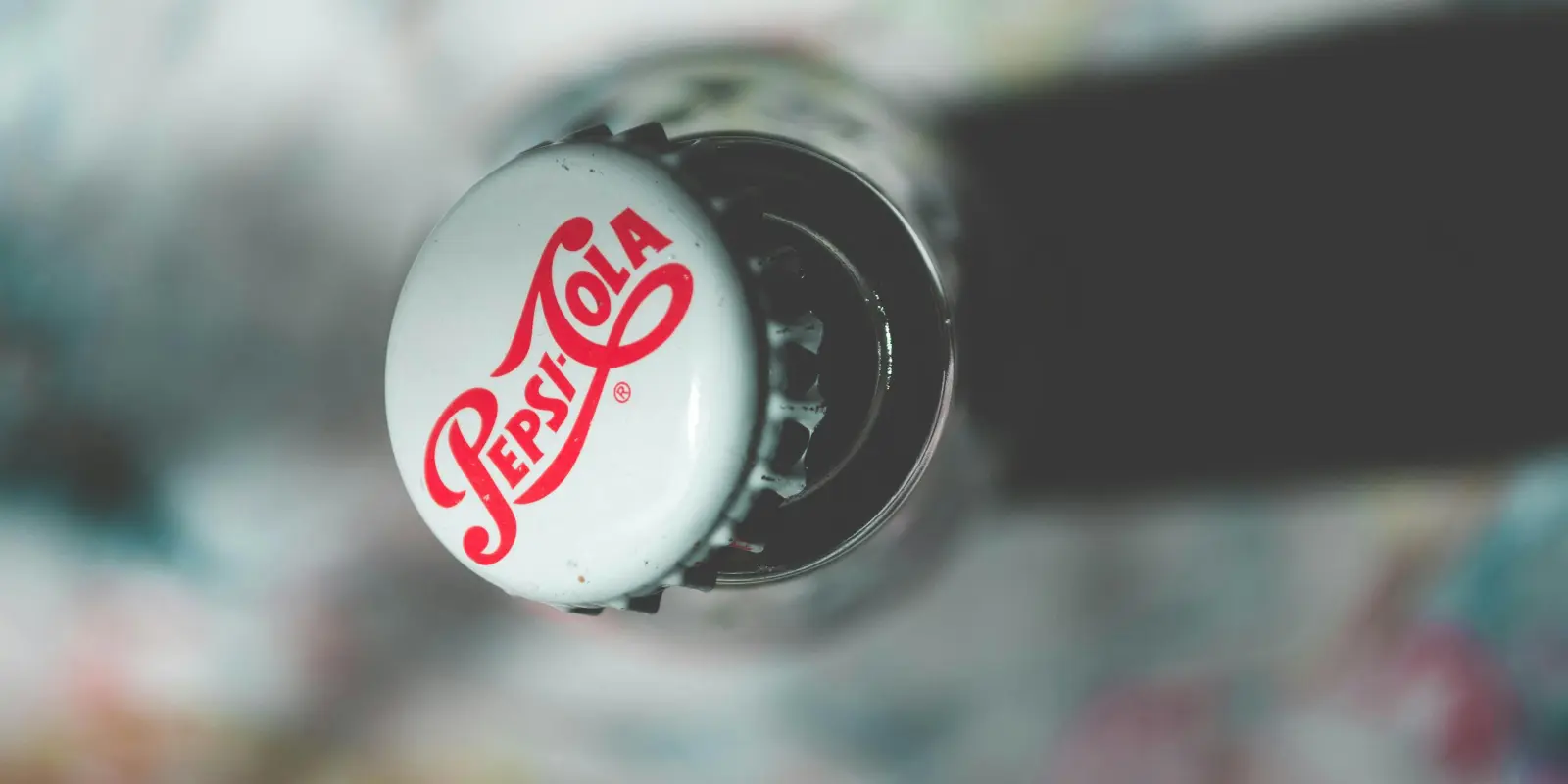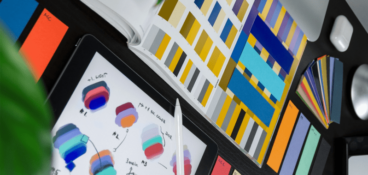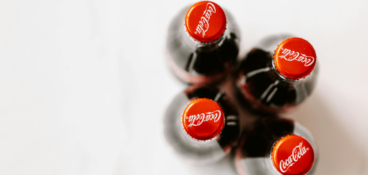Is your current brand feeling a little stale or outdated? Irrelevant even?
No need to panic and completely overhaul your brand’s identity. A simple brand refresh is an easy way to breathe new life into your brand.
Brand refreshing focuses largely on cosmetics – think logo, color palette, imagery, and tone of voice. And a few regular tweaks will help you maintain a fresh and relevant brand image.
Collaboration is a big part of any design process, and in this article I’ll walk you through the different elements you’ll need to collaborate on (and get approved) as part of a brand refresh.
But first …
What’s the difference between a brand refresh and a complete rebrand?
The difference between a brand refresh and a complete rebrand is largely to do with the scope and scale of your changes.
A brand refresh is all about updating and modernizing your existing brand elements, keeping your brand relevant without altering its core identity. Think of it like giving the brand a fresh coat of paint – making it feel current while maintaining that all-important brand recognition and loyalty.
A complete rebrand goes several steps further, completely overhauling the brand’s entire identity. This tends to be carried out when a brand needs to dramatically shift its market position, target a brand new audience, or align with huge changes in its business strategy.
If a brand refresh feels like the right direction for your brand strategy, then keep reading!
Supercharge your marketing reviews
Share, review, and approve all your content in one place with Filestage.
Seven key elements of a brand refresh
Your refreshed brand strategy will typically focus on updating both visual and messaging elements to keep your brand relevant and engaging. As part of this process, having a brand refresh checklist helps to make sure all critical areas are covered and nothing is overlooked.
So with that in mind, here are seven key elements you’ll need to collaborate on (and get approved) as part of a strategic brand refresh.
1. Brand guidelines
One of the first steps in your brand refresh should be revisiting and updating your brand guidelines. Since a brand refresh focuses heavily on visual identity, it’s important that your guidelines reflect any new design decisions. This helps keep things consistent across all brand touchpoints, which in turn helps to build brand recognition and trust.
Your refreshed brand guidelines should provide a clear framework for using brand elements such as:
- Logos – detailed instructions on logo usage, including size, spacing, and placement
- Colors – updated color palettes with guidelines on primary, secondary, and accent colors
- Typography – rules for font usage, including primary and secondary typefaces, sizes, and styles
- Imagery – guidelines on the style and tone of images, including photography styles, illustrations, and icons
- Tone of voice – instructions on maintaining a consistent brand voice in all communications to reflect the brand’s personality and values
Clear guidelines help everyone (including both internal and external stakeholders) adhere to the refreshed brand standards. And keeping things consistent across the board helps build brand recognition and trust, making it easier for potential customers to connect with your brand and understand its message.
2. Website design
Your website should be an accurate representation of your brand, so any changes to your brand’s look and feel should be reflected on your website straight away. Whether it’s updating images, color schemes, fonts, logos, or other brand elements, aligning your website with your refreshed brand identity creates a sense of cohesion.
And cohesion works wonders for UX.
Think about it – if a potential customer sees different branding on your website to your social media channels, they’ll feel confused at best, and suspicious at worst. Taking customers on a seamless user journey across all your channels builds trust and keeps them engaged, encouraging them to keep coming back for more!
3. Social media templates
Chances are that social media plays a huge role in how you communicate with your target audience. It’s a place for you to express your brand personality, showcase your brand values, and engage with your community. Refreshing your social media templates (and all other marketing materials, for that matter) is a crucial part of your brand update as it keeps new and existing customers engaged with your brand, building or maintaining a strong connection with them in a way that outdated templates wouldn’t.
By updating brand elements like colors, fonts, logos, and imagery to match your new brand guidelines, you build brand recognition and trust, making your social media efforts more effective and impactful going forward.
Remember that each platform has unique specifications and audience behaviors, so make sure your templates are created in line with these differences. Your templates should also be flexible enough to allow for creativity – too formulaic and things feel downright dull! But ultimately, the aim is to represent your brand consistently across all social media channels, be it Facebook, Twitter, LinkedIn, or TikTok.
4. Ad layouts
Advertising is often the first point of contact between your brand and potential customers, so making sure your ads reflect your updated brand identity is essential. Keeping things consistent across various ad formats and platforms (like print and digital) helps reinforce your refreshed brand image.
As part of your brand refresh, it’s also a good idea to explore the latest design trends when it comes to ads. Incorporating new design elements, as well as new ad types and technologies, keeps your ads fresh and appealing to your target customers.
5. Product packaging
Your product packaging is another important element you might need to update as part of your brand refresh. Whether you want to create a more luxurious packaging design, or simply adjust the colors, a refreshed packaging design helps create a positive first impression and entices customers to pick up your product.
You might want to consider sustainability as part of your brand refresh too – eco-friendly packaging not only appeals to environmentally-conscious consumers but also positions your brand as responsible and forward-thinking. Highlighting these efforts can enhance your brand image and attract new audiences.
While you’re at it, it’s worth rethinking your point of sales (POS) displays too.
6. Customer comms
Refreshing your brand isn’t just about visuals, it’s about how you communicate with your customers too. All customer-facing messages should reflect your refreshed brand’s tone, voice, and values. This includes emails, newsletters, website content, and customer service scripts.
Here’s why updating your customer communication is vital:
- Consistent messaging builds trust – when customers see consistency across all touchpoints, they feel more confident in your brand
- Engaging comms keeps your audience interested – use the refresh as an opportunity to attract new customers and re-engage with existing ones
- Transparency strengthens your relationships – explaining the changes and why they matter helps customers connect with your brand on a deeper level
Effective customer communication during a brand refresh ensures that your audience isn’t just aware of the changes but also understands and appreciates them.
7. Internal deck designs
Up until this point we’ve been focusing on how you present your brand externally. But your brand refresh should also cover how you present yourself internally. Your team’s perception of the brand is just as important as the public’s, as how employees perceive and embrace the brand will directly impact how they communicate it to others – both within the company and to external stakeholders.
Take time to refresh internal templates for things like presentation decks, training guides, and onboarding materials to reflect the new brand elements. Not only does this help reinforce your brand values and personality, it also fosters a sense of brand pride and enthusiasm among employees
Three examples of successful brand refreshes
Now you know the key elements to update as part of your brand refresh, let’s take a look at what a successful refresh looks like in practice.
1. PepsiCo
To celebrate its 125th birthday in 2023, Pepsi carried out a significant brand refresh to modernize the brand – without losing the essence of what makes Pepsi, well, Pepsi.

Source: Design Week
Key changes
- Logo – The Pepsi logo was updated to echo its iconic ‘90s design but with a contemporary twist, with modern elements such as a different font, font color, and a slimmer border.
- Color palette – PepsiCo introduced electric blue and black to bring contrast, vibrancy, and a contemporary edge to the classic Pepsi hues.
- Packaging – The packaging was also updated, with a new, visually distinct can silhouette to make its products stand out.
- Digital presence – The website and social media templates were revamped to align with the new brand identity.
This is a great example of a brand refresh, as it resulted in a design that is both familiar and fresh – the ideal outcome! The changes helped PepsiCo rejuvenate its brand image, appeal to younger audiences, and strengthen its brand positioning without alienating its loyal, long-time customers.
2. Nokia
In 2023, Nokia revealed a new distinctive visual identity. The aim was to refresh their branding so that it reflects who they are as a brand today, with renewed energy and commitment as pioneers of digital transformation.

Source: Nokia
Key changes
- Logo – Nokia built on the heritage of its previous logo, but made it feel more contemporary and digital to reflect the brand’s current identity. The blocky design of the previous logo was made more minimalist and angular, with slender characters.
- Color palette – The new logo was accompanied by a kaleidoscopic color palette, moving beyond its original blue color scheme and branching out into a range of bright primary and secondary hues.
- Website – The refreshed website reflects Nokia’s new visual identity, with a new look and feel that reflects the new color palette and typography choices.
The strong brand refresh has helped Nokia present itself as a modern, relevant, and forward-thinking company – which is essential for giving the brand a competitive edge in the fast-evolving tech industry.
3. Tripadvisor
Tripadvisor refreshed its brand in 2020 to bring it up to date and maintain relevance in a competitive landscape. The refresh happened in several steps over a couple of years, as a certain global pandemic hugely disrupted the travel industry and reshaped consumer behavior for good.

Source: Mother Design
Key changes
- Logo – Tripadvisor updated its old logo to a more streamlined and modern design. Ollie the Owl, which used to have two different colored eyes and a yellow head, was simplified and rendered in black only.
- Color palette – To balance the monochrome logo, Tripadvisor introduced a brighter, more varied color palette to create a fresh look that engages new target audiences. Some of the shades now include ‘TripGreen’, orchid, salmon, rose, sand, moss, pine, and mustard.
- User interface – The website and app were both updated to reflect the new identity and to enhance customer experience. This included a review hub and a section for user-generated content.
The brand refresh brought Tripadvisor bang up to date, helping to keep it relevant in a world where bright colors and clean lines are all the rage.
How Filestage can help with your brand refresh process
As we’ve seen, a successful brand refresh involves updating multiple elements, from logos and color schemes to internal and external comms. An essential step in this process is review and approval. This makes sure every change aligns with your brand’s vision and strategy. And that everything is mistake-free too.
Filestage is a review and approval platform that streamlines collaboration and communication between team members and other stakeholders. It provides a centralized place to share, discuss, and review all your updated brand assets – whether that’s new artwork, updated templates, redesigned wireframes, or refreshed brand guidelines.
Here are a few ways Filestage helps with your brand refresh process:
- Set up project workflows to manage all your brand assets and stakeholders in one place
- Get fast and accurate feedback with point-and-click comments and visual annotations that appear in real time
- Zoom in and rotate designs to give feedback on every detail
- Keep versions organized in one platform so you can easily see the evolution of your assets
- Compare versions side by side to make sure everyone’s feedback has been met
- Set due dates to keep your project on track and help you meet deadlines
- Track approvals and change requests at a glance from your dashboard
- Ensure brand compliance by setting up a separate review group for legal and compliance specialists to review your content
Once the first round of feedback has been implemented, you can easily upload a new version of your artwork, templates, or brand guidelines, until each stakeholder gives their approval.
Final thoughts
I hope this guide has inspired you to carry out your own brand refresh to give your brand a leading edge. If you’d like to see for yourself how Filestage can help, start a free trial today.








